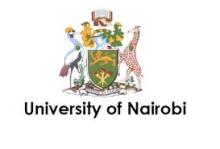Resource information
Determining an appropriate allocation of land between alternative competing uses is a fun-damental problem that continues to be a challenge in many developing countries. Amboseli Ecosystem, one of Kenya’s rangelands has been experiencing changes in its economic activi-ties. Traditionally pastoralism and wildlife conservation has been the key source of livelihood for people in the ecosystem. Crop production is a more recent economic activity being inte-grated in the ecosystem. These changes are attributable to the macro and micro economic, social and demographic factors. Therefore, the question of the economic benefits to the land owners for engaging in different land uses arises. This creates the need to do an economic evaluation of the land- use options and their drivers within the ecosystem. The major land –use options identified included livestock keeping, crop production and wildlife conservation. The study used gross margin analysis to determine the value of these competing land use op-tions. This was coupled with multinomial logistic regression analysis to determine the drivers of these competing lands -use options. The study used both primary and secondary data. Pri-mary data was obtained at the household level using semi-structured questionnaires, focused group discussions and key informant interviews and secondary data from the District Agricul-tural Office, Loitoktok. Primary data was collected in 2014 from a sample size of 295 house-holds using probability proportional to size sampling in a systematic random procedure. Data was entered; cleaned and analyzed using statistical packages; SPSS, STATA and Ms Excel.
Different socio-economic (age, annual net income and education), microeconomic (distance to nearest market centre, access to credit) and land characteristics (distance to the main source of water, land tenure and land size) influenced the decision on the choice of land- use. The results showed that all the three economic activities have significant contribution to the household’s welfare. In the case of the crops and livestock production, the choice of the eco-
nomic activity to practice and its intensity is entirely dependent on the decision by the house-hold. This is unlike wildlife conservation that has some influence from the government through KWS.
Livestock keeping is seen to be a more stable source of income for the households compared to wildlife conservation. This is because for every unit increase in the annual income of the household, livestock keeping is preferred to wildlife conservation. Similarly, the gross margin analysis results showed a higher net income from livestock per household compared to wild-life conservation. The government should therefore put in place mechanisms that encourage wildlife conservation and would lead to more direct benefits from wildlife. These are such as prompt compensation for farmers after loss of their animals or injuries caused by wildlife or direct payments to farmers who lease their lands for wildlife conservation.


